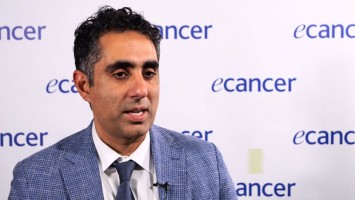The main message, I would say, is that the area of immunotherapy and cancer now is making a major impact on the clinic. It’s been around for a long time now but the last two or three years a lot of new concepts have reached the clinic and are now in clinical practice. I think that’s probably the main message, that we are now getting an integrated part of oncology which was not the case before.
What is the significance towards clinical practice?
We have had several breakthroughs. The field of immune therapy was elected the breakthrough of the year last year, 2013, in the prestigious Journal of Science and that is because of, for example, the first tumour vaccine was approved by the FDA in the US against advanced prostate cancer, a dendritic cell type of vaccine. That’s one example and I think the cell therapy advance, cell therapy is going forward very much with gene modified T-cells which have been modified to recognise very efficiently tumour cells particularly in leukaemia but also in various types of solid tumours. Then maybe last but maybe not least is the introduction of a new type of antibody therapy, the so-called checkpoint antibodies, and that has to do with the immune system reacting to a number of checkpoints as a negative feedback mechanism, not to over-react or get autoimmunity. If you release this checkpoint it is like releasing the brake of a car, that the system gets much more efficient and then starts killing tumour cells, so eliminating tumour cells more efficiently, unfortunately with some side effects but these we can manage. So I think that these are the major breakthroughs of the past few years.
What obstacles have you encountered?
One obstacle, of course, is side effects. I just mentioned that particularly with checkpoint antibodies, but also with some of the other therapies but mainly with checkpoint antibodies, you have quite strong autoimmune reactions in the patient. For example, they can get quite severe bleeding from the intestines, the colon, and you have to treat that with high dose cortisone. But in most cases they are manageable so there’s a certain base of giving high dose cortisone and then you can cope with these problems. There are also other problems with the skin, the endocrine system and etc. but they are all manageable.
What are the next steps?
In the field the next steps are new combinations, I think that’s very fascinating, for example, combining some of the more efficient checkpoint antibodies, two in particular, against two molecules, PD1 and CTLA-4. There are some very exciting results now that combining these two can give very high response rates, particularly in malignant melanoma. I myself am an oncologist working in malignant melanoma and that is where most of the progress has been made. Malignant melanoma is regarded as a very immunogenic tumour, that is a tumour which has a capacity to be seen and activated by the immune system. If you combine these two antibodies there are some reports that they can get up to 40-50% response rates, maybe, which is very… And some of these patients might even be cured apparently. And then for cell therapy, which I work with myself hands on, is also for solid tumours there are some promising results. So-called TIL therapy, tumour-infiltrated lymphocytes, where you take out the T-cells from the tumours and then expand these to larger numbers in bio-reactors and then give them back to the patient. Then you can enrich for the T-cells which are there to take care of the tumour and recognise the tumour. There are some very good results from these, several centres around the world with that type of therapy also.
No, I think it’s important now that we interact also with other people in other disciplines in oncology – small molecular inhibitors and commercial therapies also, like radiotherapy or chemotherapy. Combine these with immunotherapy, I think then we have a very exciting time ahead of us.








